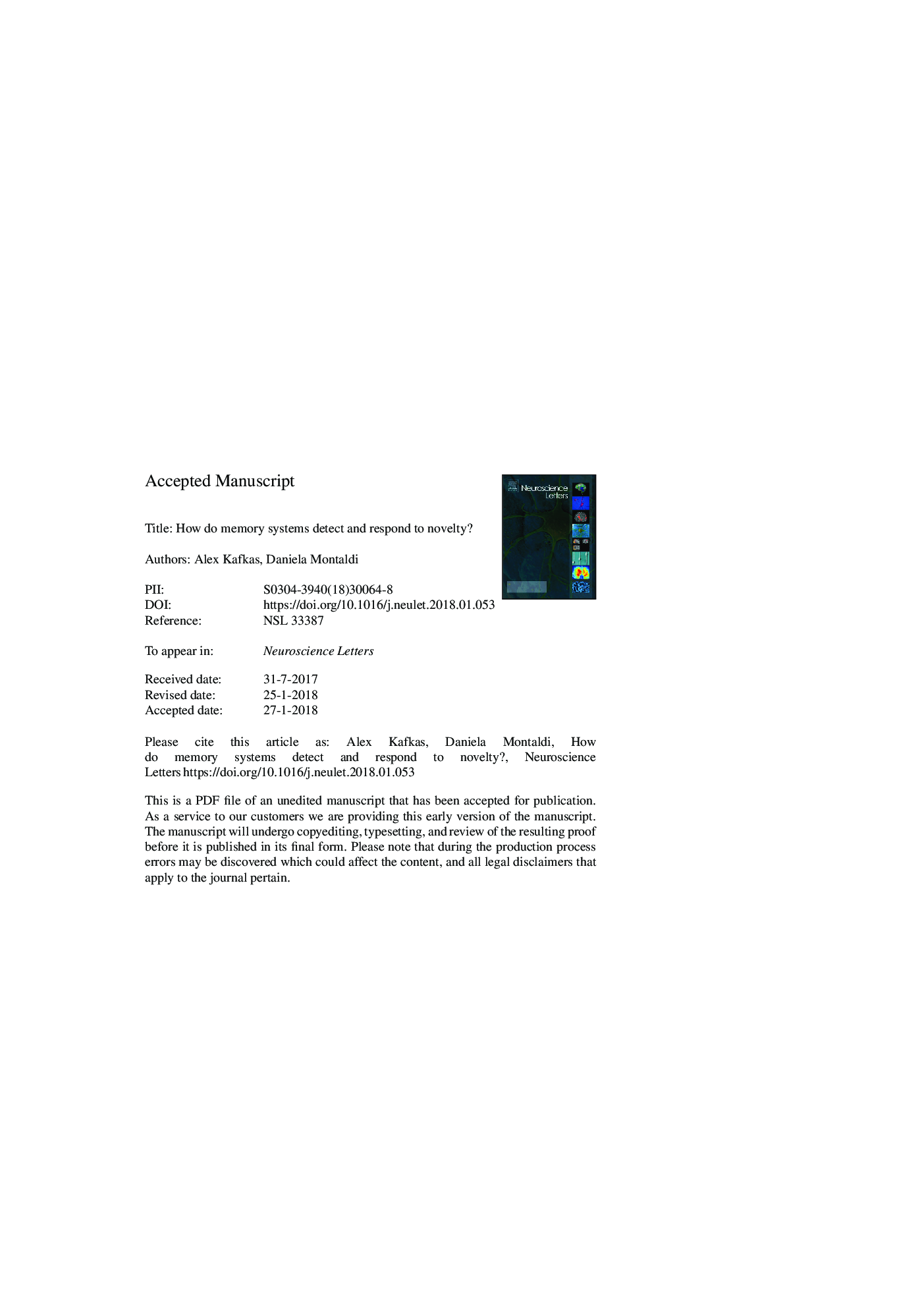| Article ID | Journal | Published Year | Pages | File Type |
|---|---|---|---|---|
| 8841446 | Neuroscience Letters | 2018 | 38 Pages |
Abstract
The efficiency of the memory system lies not only in its readiness to detect and retrieve old stimuli but also in its ability to detect and integrate novel information. In this review, we discuss recent evidence suggesting that the neural substrates sensitive to detecting familiarity and novelty are not entirely overlapping. Instead, these partially distinct familiarity and novelty signals are integrated to support recognition memory decisions. We propose here that the mediodorsal thalamus is critical for familiarity detection, and for combining novelty signals from the medial temporal lobe cortex with the relative familiarity outputs of computations performed in other cortical structures, especially the prefrontal cortex. Importantly, we argue that the anterior hippocampus has a prominent role in detecting novelty and in communicating this with midbrain and striatal structures. We argue that different types of novelty (absolute or contextual) engage different neurotransmitter systems that converge in the hippocampus. We suggest that contextual or unexpected novelty triggers dopaminergic hippocampal-midbrain coupling and noradrenergic-mediated pupil dilation. In contrast, absolute novelty triggers cholinergic-mediated hippocampal encoding accompanied by diminished pupil dilation. These two, distinct hippocampal encoding mechanisms both lead to later recollection but are sensitive to different types of novelty. We conclude that this neurotransmitter-mediated hippocampal encoding establishes the hippocampus in an encoding mode that briefly prevents the engagement of retrieval.
Related Topics
Life Sciences
Neuroscience
Neuroscience (General)
Authors
Alex Kafkas, Daniela Montaldi,
